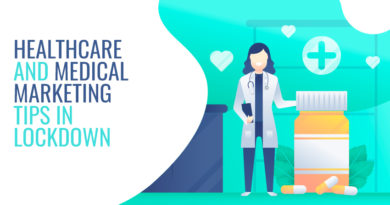7 Website Speed Optimizations You Can Do Yourself
Research has suggested that about a 1% enhancement in revenue is witnessed for every 100 milliseconds the site speeds up (Amazon has sited this in 2006).
In fact, Google has announced that for improving the web, the page load speed is now counted as a crucial factor for ranking in the search engines.
Ever since then there have been several case studies that show how fast loading sites have benefitted businesses.
Added to reducing the bounce rates, optimising your site speed can also help with the –
- Visibility –Google now uses website load speeds at the time of ranking pages for search and so slow loading sites do not rank high.
- Usability – The ease and speed with which the consumers can explore and use your site determines whether they want to spend time on it and ultimately make a purchase. So slow loading sites prevent purchasers form going ahead.
- Conversions – Conversions happen when a visitor accomplishes something on the site like registering, downloading or purchasing something. The fast loading sites enable higher conversion rates.
So now that you know how critical the loading speed is for your site, here are some of the ways of enhancing the site speed.
- Leave the Budget Web Hosting Platforms – One way some people try saving money is by going with the cheap shared hosting platforms which take in as many websites as they can fit into the server. Performance naturally suffers under such circumstances. Even though your website will be available like in the case of other hosts, your site will load so slowly that the visitors will leave in frustration. So skip the budget web hosting platforms and opt for the quality ones that are optimised for speed and some of them are also affordably priced. So try those!
- Reduce the Size of the Images – For an aesthetically pleasing website, images are imperative. But the large files can reduce the performance of the website dramatically. For boosting the site speed without harming the image quality, you should reduce the size of the image. The tools like Smush for the WordPress sites and TinyPNG for the non-WordPress ones can help you with this. These are reliable, simple-to-use and offers great compression quality balance. However, ensure that the images don’t lose the noticeable quality because of the compression.
- Reduce Redirects – Your site visitor has to wait for a prolonged phase every time a page redirects to another one for the HTTP request-response cycle to get completed. As compared with the 404 errors or broken links, the 301 or permanent redirects are preferable. But they still slow down the site as the browser takes to reach the correct version of the page. Screaming Frog is one of the most useful tools for the 301 redirects.
- Enable Compression – Enabling GZIP compression can decrease the time for downloading the CSS, HTML and Javascript files as they are downloadedin reduced sizes which, once they reach the browser, are then decompressed. All the modern browsers are supporting the GZIP and they process it automatically for all the requests of HTTP.
- Minify and Combine Files – Your site makes a whole lot of requests so you have to reduce the number of the HTML, JavaScripts and CSS files. These determine the appearance of the site and so are extremely vital. You can decrease the number by minifying and combining the files. This reduces each file’s size as well as the total file numbers. This is especially important if you use a website builder that is a template. These make it simpler to build a website but they, at times, create a messy code which can slow the site down considerably. Removing the whitespace, unnecessary formatting and code is said to be minifying. Eliminate the line breaks, spaces and indentation. If the site runs a plethora of JavaScript and CSS files you can mix them into one. There are several methods to minify and combine the files. Plugins like WP Rocket if the site runs on WordPress can help in this case. Remember that a leaner website is better. The fewer the elements on page the fewer HTTP requests are needed by the browser for rendering and the faster the page is going to load.
- Enable Website Caching – The database servers work slowly for delivering the page if many people access your site at the same time. For enhancing the speed you can cache the current version of the site on the content delivery network of the web host. This implies that the copy of the site will be saved on the servers in various locations. This way when someone tries accessing the site, the content will be loaded form the server that is closest which will make it faster. Most hosts offer a setting for enabling the caching from the control panel. For accomplishing this, you can install the plugins.
- Use the Content Distribution Network – The CDNs or the Content Distribution Networks or Content Delivery Networks are the networks of servers which are used for dispensing the delivering contents load. When you use this, the copies of the site are stored at multiple geographical data centres so that the users have more reliable and faster access to the sites.
When you choose a premium web designing company, the team there ensures that your site has a fast loading speed so that your site visitors never feel the need to leave your site midway and you can get maximum conversions.




